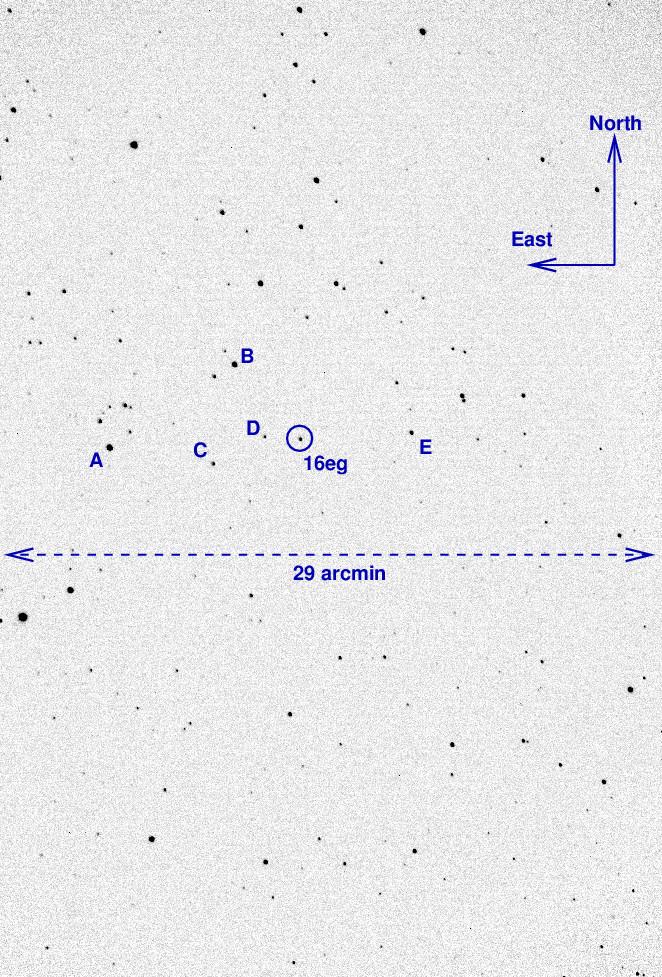
On the night of Apr 14/15, 2016, I acquired a set of observations of the cataclysmic variable star ASASSN-16eg. The variable star showed an average magnitude of about 13.4 (about 0.3 mag fainter than two nights ago), with variations of only about +/- 0.07 mag during the run.
The main setup was:
This cataclysmic variable star was noticed by the ASASSN search recently.
I have other observations of the object on
The object is located at
RA = 17:26:10.36 Dec = 42:20:02.7
A chart of the field is shown below. The size of the chart is about 44 arcmin tall (North-South) and 29 arcmin wide (East-West). This rather unusual portrait-mode orientation is forced on us if we use the off-axis guider on the new ATIK 11000 camera.

Entries for some of the marked comparison stars from the UCAC4 follow:
star UCAC4 B V ---------------------------------------------------- A 662-062549 11.569 10.476 B 662-062523 11.434 10.970 C 662-062528 13.831 13.170 D 662-062515 14.533 13.817 ----------------------------------------------------
I used 40-second exposures in V-band. Once again, the signal-to-noise is a bit lower than I'd like, so in the future, I might try unfiltered measurements.
Conditions were good. The quarter moon set early in the run, and the skies were dark. Measurements of the sky background value show a smooth decrease as the field rose, until dawn came. No clouds!
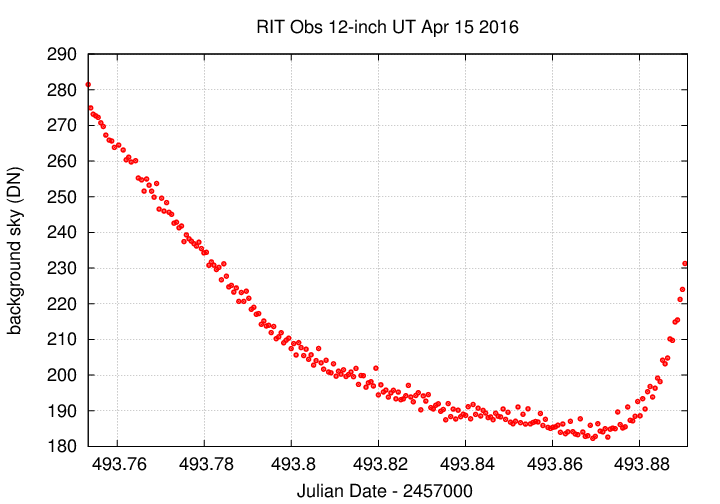
The FWHM bounced around between about 3.5 and 4.5 pixels. There were quite a few short trails, due to the lack of a guider.
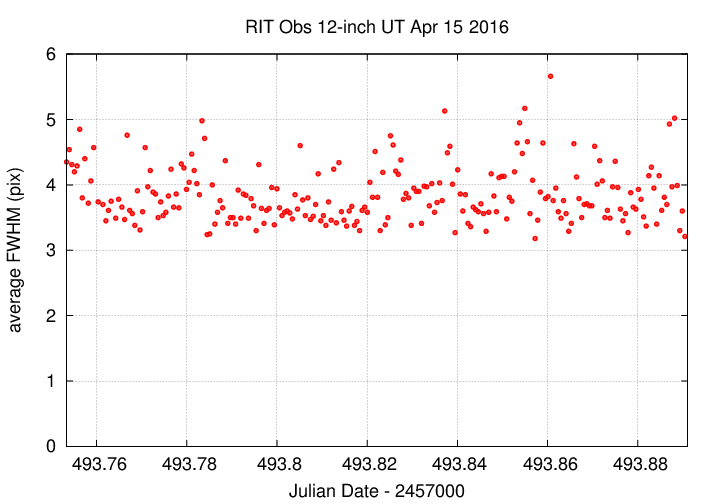
The lack of guider really hurt, as stars drifted across the chip. I tried to make manual corrections every 10 minutes or so to keep stars in roughly the same position on the detector, but some of the scatter in the final measurements must be due to variations as sources moved from one region to another.
As before, I removed any measurements which were made more than 600 pixels (791 arcsec = 13.2 arcmin) from the center of the field.
Using aperture photometry with a radius of 5 pixels (radius of 6.7 arcsec), I measured the instrumental magnitudes of a number of reference stars and the target. Following the procedures outlined by Kent Honeycutt's article on inhomogeneous ensemble photometry, I used all stars available in each image to define a reference frame, and measured each star against this frame.
Sigma-vs-mag plots show that the floor was about 0.005 mag. ASASSN-16eg is the outlier at diff mag = 2.8.
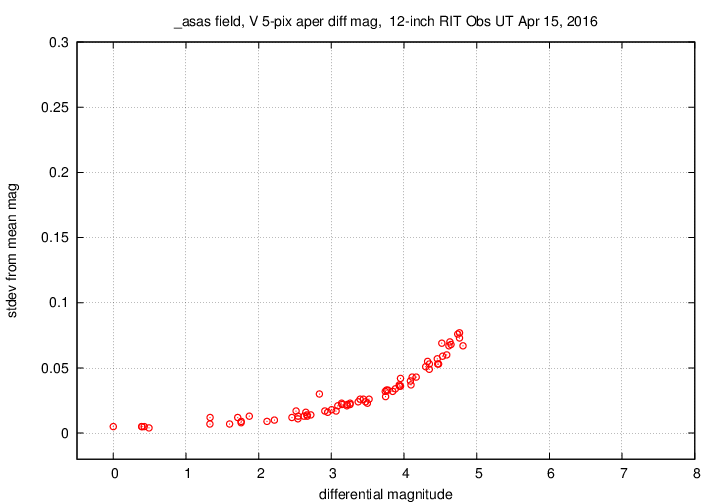
Image adjustment factor shows no evidence for clouds, just lots of outliers due to trailed images.
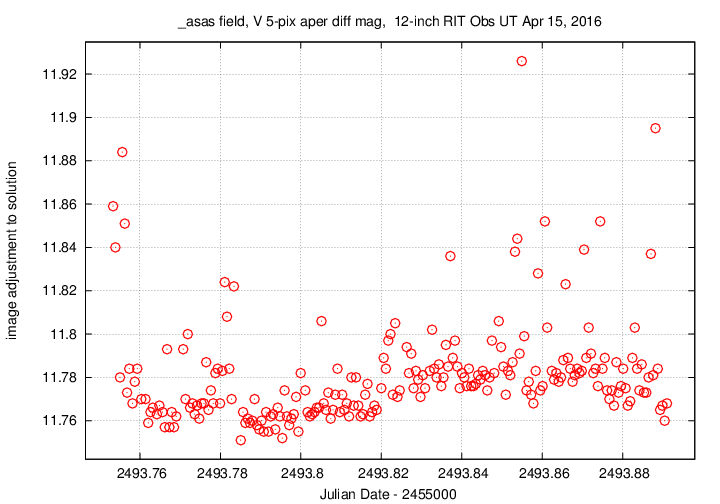
Here are light curves of the variable and the field stars:
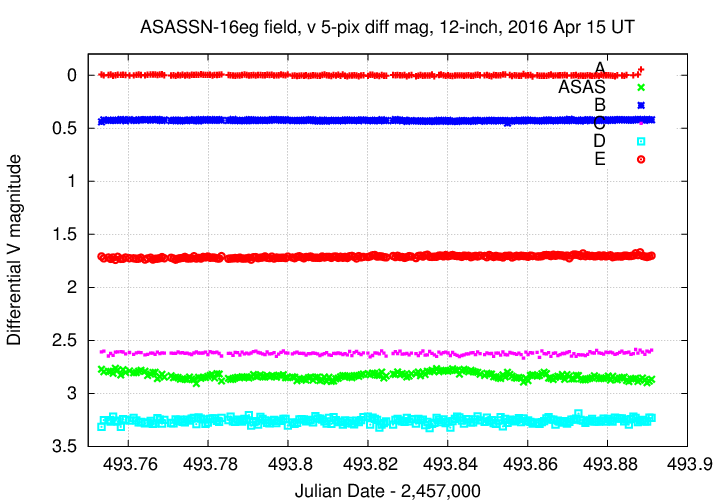
A closeup shows the variations in ASASSN-16eg more clearly.
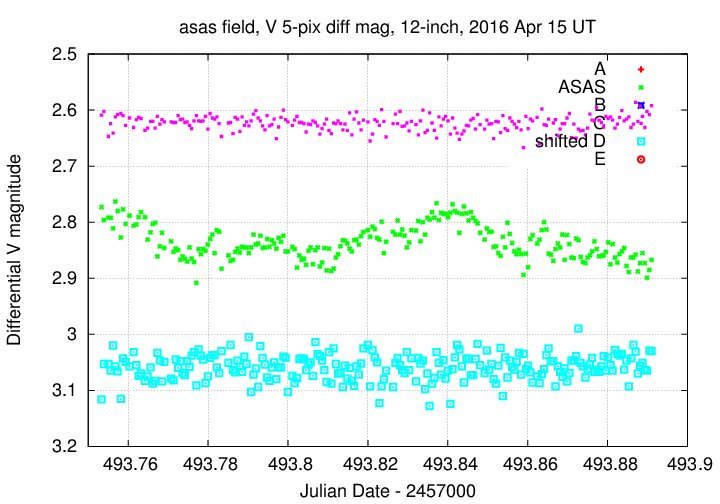
I used the UCAC value for the V-band magnitude of star "C" = UCAC4 662-062528 to shift the ensemble magnitudes to the standard V-band scale. You can download my measurements below. A copy of the header of the file is shown to explain the format.
# Measurements of ASAS_SN16eg made at RIT Obs, Apr 15, 2016 UT, # in good conditions. # by Michael Richmond, using 12-inch Meade and ATIK 11000 CCD. # Exposures 40 seconds long, V filter. # Tabulated times are midexposure (FITS header time - half exposure length) # and accurate only to +/- 1 second (??). # 'mag' is a differential magnitude based on ensemble photometry # using a circular aperture of radius 6.6 arcseconds. # which has been shifted so UCAC4 662-062528 has mag=13.170 # which is its V-band mag according to UCAC4. # # UT_day JD HJD mag uncert Apr15.25334 2457493.75334 2457493.75491 13.320 0.016 Apr15.25391 2457493.75391 2457493.75548 13.343 0.016 Apr15.25506 2457493.75506 2457493.75663 13.339 0.016
Last modified 4/15/2016 by MWR.